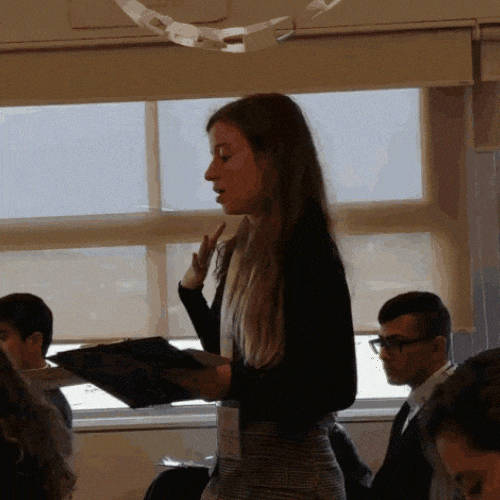Language inclusion in higher education | A global perspective


Language, from the beginning of time, has served not only as a means of communication, but also as a bridge connecting diverse cultures, histories, and traditions. Recently, higher education institutions worldwide have come to recognize the pivotal role of language inclusion as they champion knowledge and progress.
n this article, we’ll be discussing the global perspective on language inclusion in higher education, looking into its significance, challenges, solutions, and prospects, including Germany's engagement with the English language in academia.
Before we dive into the core of language inclusion, let's clarify what we mean by "higher education." Higher education encompasses a diverse range of academic institutions, including universities, colleges, and vocational schools. Here, students pursue advanced studies beyond their secondary education, spanning undergraduate, graduate, and doctoral programs across various fields of study.
In an era characterized by heightened international student mobility, today's global higher education landscape is marked by unparalleled diversity. Ensuring language inclusion is imperative to guarantee equal access to educational opportunities for all.
Multilingual learning: Across the globe, universities are progressively adopting a multilingual approach that extends beyond traditional language courses. This shift acknowledges that multilingualism entails more than just speaking multiple languages; it cultivates a mindset that embraces the beauty of linguistic diversity.
This approach empowers students to access English-language courses while being supported by resources in both their native and target languages, thus creating a more inclusive learning environment.
Language diversity: Embracing linguistic diversity acknowledges that each language offers a unique perspective on the world. It equips students for a globalized job market where language diversity is an invaluable asset. For German learners of English, this means gaining exposure to diverse linguistic backgrounds, and enriching their language skills and cultural awareness.
Inclusivity and accessibility: Language inclusion ensures that all students, regardless of their linguistic backgrounds, can actively engage in classroom discussions, complete assignments, and participate in campus activities. It promotes a sense of belonging and dismantles language-related barriers that may impede academic progress.

Global perspective: Encouraging language diversity enhances the global perspective of education. Students gain exposure to different worldviews, cultures, and ways of thinking, enriching their intellectual growth and expanding their horizons beyond linguistic boundaries.
Competitive advantage: Graduates proficient in multiple languages possess a competitive edge in the global job market. Language skills are highly sought after by employers and open doors to international career opportunities.

While the aspiration for language inclusion is admirable, several challenges must be addressed to ensure its effectiveness:
Language access: Many students, including German learners of English, may encounter difficulties accessing learning materials in English. This can result in comprehension gaps and hinder their learning experiences. Universities can proactively provide resources, tools, or translation services to ensure equitable access to academic content.
Language policies and plans: The formulation and implementation of comprehensive language policies is pivotal. This entails making decisions regarding the languages to be taught and/or used for instruction, and strategies for managing linguistic diversity within the institution. Clear language guidelines ensure that students from diverse linguistic backgrounds can excel.
Cultural sensitivity: Language challenges often intersect with cultural differences. Promoting cultural sensitivity and understanding alongside language inclusion is crucial. Educating both students and faculty on cultural nuances fosters a respectful and harmonious learning environment.
Support services: Comprehensive language support services, including language courses, tutoring, language exchange programs, and counseling services addressing language-related challenges, are vital. They assist students in improving their language skills and managing stress related to language learning.

Faculty development: Training and development programs for faculty members can equip educators to adapt their teaching methods to cater to diverse linguistic backgrounds effectively. Equipped with strategies for effective communication and language support, professors can better assist students facing language-related difficulties.
Collaborative initiatives: Collaborations with local communities and international organizations can enhance language support efforts. These partnerships can provide additional resources, such as language immersion programs and access to cultural events, further enriching the learning experience.
As the journey toward complete language inclusion in higher education continues — with a global emphasis on linguistic diversity, accessibility, and fairness — the future appears promising. As universities around the world adapt and grow, language inclusion is poised to become an integral part of higher education, deeply ingrained in institutional practices.
This transformation transcends policy changes; it involves a fundamental shift in mindset. By wholeheartedly embracing language inclusion, higher education institutions can proudly assert that they are preparing tomorrow's leaders — individuals who possess global awareness, linguistic versatility, and a profound appreciation for the richness of language.
We here at Denglisch Docs, a pioneering company with a mission to make the D-A-CH-LI region fully bilingual, embody the vision of language inclusion in higher education. Our innovative approach demonstrates that language inclusion is not merely a concept, but is, in fact, a living reality where language boundaries fade away, nurturing an inclusive and diverse educational environment.
Through initiatives like ours, both students and educators can directly experience the transformative potential of linguistic diversity in higher education.
As language inclusion initiatives continue to evolve, higher education institutions are at the forefront of preparing students for a dynamic, interconnected world. Language is no longer a barrier; it is a bridge that connects individuals across borders, opening doors to a future where linguistic diversity is celebrated, understood, and embraced.
We are committed to equity,
diversity, and inclusion.
We welcome students,
educators, users, researchers,
and employees from a diverse
set of backgrounds.
Our own backgrounds vary in
terms of socioeconomic status,
religion, race, ethnicity,
gender
identity, sexual orientation,
age, neurodiversity,
disability,
and nationality.
In short: Be you. Do you.
We love and embrace
what makes you you. ![]()
Thank you for inviting us to assess
your web copy!
One of our copy analysts will take
a close look at your website and
get back to you right away.
We appreciate your trust. ![]()